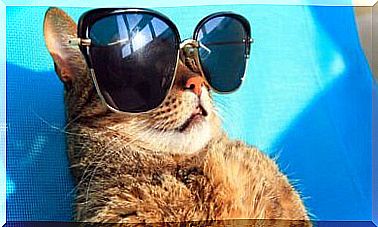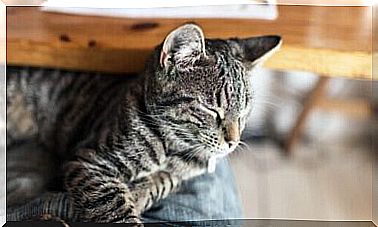Preventing Hairballs In Cats: Useful Tips

Felines spend a good part of the day grooming themselves. This habit has its pros and cons, as even though they keep themselves clean this way, they can also swallow hairs that they pluck with their coarse tongues. In this article we will explain how to prevent hairballs in cats.
Hairballs in cats, a danger to their health
We see them constantly cleaning their legs and any other part of their body … and soon after we hear them coughing several times until they spit or vomit a hairball. It is a rather unpleasant situation that can be prevented.
In addition to this, however, we must consider that the accumulation of hair in the cat’s stomach can cause various ailments, such as constipation, apathy, swollen belly, weakness or loss of appetite.
Cat hairballs are more common in long-haired breeds, such as the Angora, Persian, Maine coon or the sacred cat of Burma. As they cleanse, they pluck out several hairs and swallow them, which later produces regurgitation and even choking.
It is also good to remember that during the moulting period, i.e. in spring and autumn, the episodes with hairballs increase. For this reason, you must help your cats to avoid this problem.
Tips for preventing hairballs in cats
If we see our cat “fighting” with a hairball stuck in his throat, we certainly want to help him, but often we don’t know how to intervene.
The best way is to avoid the production of the aforementioned boluses, but we can also facilitate their expulsion. Pay attention to the following tips:
1. Brush the cat every day
If your cat is longhaired, such as the Norwegian Forest Cat or the Himalayan Cat, we highly recommend brushing it every day. In pet stores you can buy high quality brushes, some even in the shape of a hand to make everything more comfortable.
And if your pets do not allow themselves to be brushed, take the opportunity to pamper them and, thus, remove excess hair.

2. Feeding foods with fiber
Ask your vet what is the best food to give cats the right amount of fiber. These will help the intestine to get rid of the accumulated hair.
One of the most fibrous foods is malt. You can give it mixed with their usual food (for example with pate) or wet the paws with this cereal … Sooner or later they will lick them to clean them!

3. Use a natural lubricant
Natural oils, including olive oil, are great for preventing hairballs in cats, as they turn into lubricants when the animal needs to go to the toilet.
If your cats eat dry food, pour some on top. If not, you can put some oil on your paws for you to ingest when it cleans up.
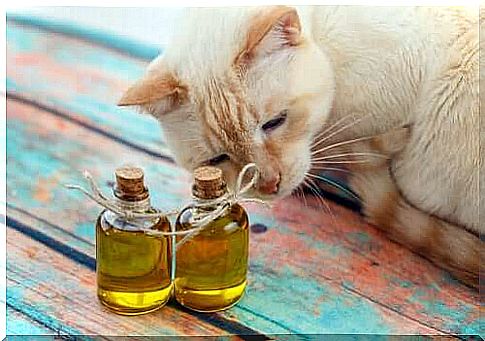
4. Never forget about water
Another quality lubricant is fresh water. It is very important to keep the cat hydrated. Drinking will also push the hairballs from your throat to your stomach, so you are less likely to swallow them.

5. Keep barley plants indoors to prevent hairballs
Ask your vet if this is an option to consider. Some plants, such as barley, valerian, or catnip, are used by felines to purge themselves. Be very careful, as many plants we often keep indoors are toxic to pets. Make sure you buy the right one!
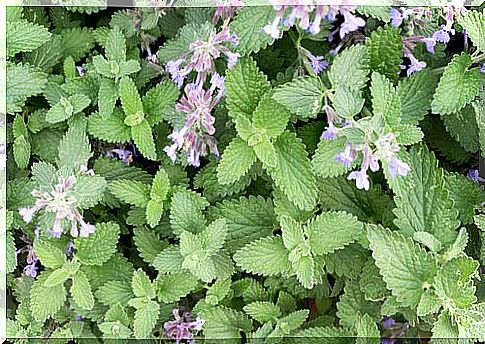
6. Play more
Some cats spend the day grooming themselves because they get bored. Others because they have a certain obsession with hygiene. To avoid both causes, we recommend that you play more with your pets. Furthermore, the movements of the game will favor intestinal transit. And you will improve their mood!
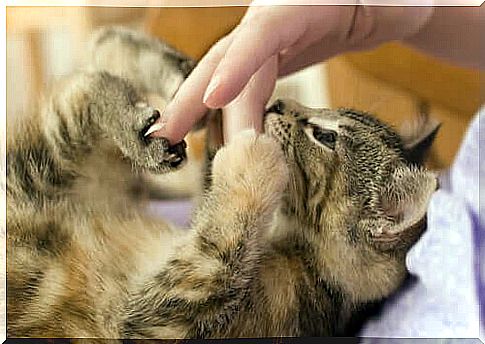
In the event that none of the techniques previously indicated to prevent hairballs in cats are valid, we recommend that you contact your veterinarian. These will help you locate the problem and fix it.


